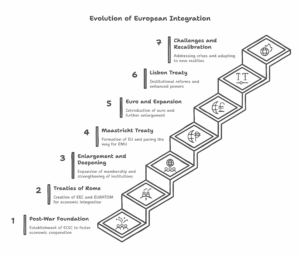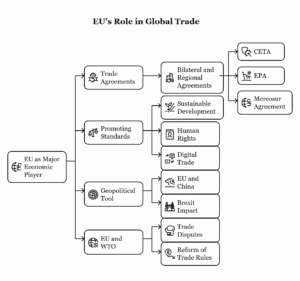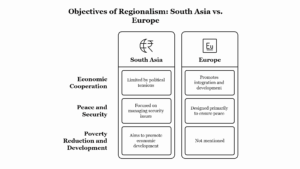-
Continue reading →: Canadian Constitution Act of 1982
The Constitution Act of 1982 is a pivotal legal document in the history of Canadian constitutional law. It marked the patriation of the Canadian Constitution, meaning that Canada gained full control over its constitutional framework, which had previously been under the authority of the British Parliament. This act brought to…
-
Continue reading →: The New Democratic Party of Canada
The New Democratic Party (NDP) is one of Canada’s major political parties, founded in 1961 through the merger of the Co-operative Commonwealth Federation (CCF) and the Canadian Labour Congress (CLC). It is a progressive, left-wing political party that advocates for social justice, workers’ rights, and a stronger welfare state. The…
-
Continue reading →: Efforts to reform Canadian Public Administration
Canadian public administration has undergone several significant reforms throughout its history, driven by changing political, economic, and social contexts. These reforms have sought to improve the efficiency, effectiveness, and responsiveness of public institutions, address the challenges of fiscal management, and modernize the delivery of government services. This examination will highlight…
-
Continue reading →: The functions of the Canadian Parliament
The Canadian Parliament is a cornerstone of the country’s democratic system, operating under a parliamentary form of government. It is the supreme legislative body in Canada, responsible for enacting laws, representing the electorate, and overseeing the activities of the government. The functions of the Canadian Parliament can be categorized into…
-
Continue reading →: Characteristics of federalism in Canada
Federalism is a system of governance where power is divided between a central (national) government and regional (provincial or state) governments. In Canada, federalism is a fundamental feature of the political system, reflecting the diversity of its geography, languages, and cultures. The Canadian model of federalism is unique in several…
-
Continue reading →: Place of industry and trade in the economy of Canada
Canada’s economy is one of the largest and most diversified in the world, with a heavy reliance on natural resources, industry, and trade. The country’s economic structure is characterized by a blend of high-tech industries, natural resource extraction, and strong trade relations with its global partners, particularly the United States.…
-
Continue reading →: Main features of Canadian federalism
Canadian federalism is a system of governance in which powers are divided and shared between the national (federal) government and provincial or territorial governments. This structure, which is enshrined in Canada’s Constitution, provides for the existence of multiple levels of government that are independent yet interconnected. Canadian federalism is unique…
-
Continue reading →: Policy of multiculturalism in Canada
Canada’s policy of multiculturalism is a central feature of the country’s social fabric, reflecting its commitment to recognizing and celebrating diversity. The policy is based on the belief that the country’s strength lies in its diversity, and it aims to ensure that all citizens, regardless of their cultural background, can…
-
Continue reading →: What has contributed to the growth of Quebec nationalism?
Quebec nationalism has been a significant political and cultural force in Canadian history, shaping the relationship between the province of Quebec and the rest of Canada. The rise of Quebec nationalism is rooted in historical, cultural, linguistic, and political factors that have driven the desire among some segments of the…
-
Continue reading →: Main features of the Women’s Movement in Canada
The women’s movement in Canada has played a pivotal role in advocating for gender equality and challenging societal norms that have historically marginalized women. This movement, which spans several waves and has evolved significantly over time, has worked to secure political, economic, and social rights for women. The features of…
-
Continue reading →: Determinants of pressure groups in Canada
Pressure groups, also known as interest groups or lobby groups, play a significant role in Canadian politics by representing the interests of various segments of society and attempting to influence government policies and decisions. These groups advocate on behalf of particular causes, industries, or social movements, and their impact is…
-
Continue reading →: Principal features of administrative reforms in Canada in the 1980s and 1990s
The administrative reforms in Canada during the 1980s and 1990s were driven by the need to modernize the public sector, improve efficiency, and manage fiscal constraints. These reforms were largely aimed at addressing budgetary deficits, reducing the size of government, enhancing service delivery, and adapting to the changing political and…
WELCOME!
Yearly Archive
Categories List
- biodiversity
- Canada
- culture
- democracy
- economy
- European Union
- ignou
- india
- International Relations
- nature
- news
- political-philosophy
- political-science
- sustainability
- Uncategorized
- UPSC
Tag Cloud
agriculture ai business Canada china climate climate-change conservation diversity ethics european-union farming feminism finance gandhi health history ignou india KNOWLEDGE liberty mahatma-gandhi marxism nationalism nonviolence philosophy political-philosophy political-science political-theory politics poverty PSC religion renewable-energy russia socialism sociology sustainability sustainable-agriculture sustainable-living technology terrorism travel UPSC women
Term List
- africa
- agriculture
- ai
- aristotle
- bangladesh
- bjp
- business
- Canada
- china
- christianity
- climate
- climate-change
- conservation
- critical-theory
- digital-marketing
- diversity
- ecology
- elections
- ethics
- europe
- european-union
- faith
- farming
- fascism
- featured
- feminism
- feminist
- finance
- frankfurt-school
- freedom
- fundamentalism
- gandh
- gandhi
- gardening
- gender
- gender-equality
- global-warming
- government
- health
- herbs
- history
- human-rights
- ignou
- india
- inequality
- intellectual-property
- italy
- karl-marx
- KNOWLEDGE
- language
- law
- learning
- lenin
- liberty
- lifestyle
- linguistics
- mahatma-gandhi
- marx
- marxism
- mental-health
- MPS
- multicultural
- multiculturalism
- nationalism
- natural-remedies
- nonviolence
- organic-farming
- patents
- philosophy
- political-philosophy
- political-science
- political-theory
- politics
- pollution
- poverty
- PSC
- recycling
- religion
- renewable-energy
- russia
- socialism
- sociology
- soviet-union
- spirituality
- sustainability
- sustainable-agriculture
- sustainable-living
- teaching
- technology
- terrorism
- trademarks
- travel
- UPSC
- water
- water-conservation
- wellness
- wildlife
- women
- women-empowerment





